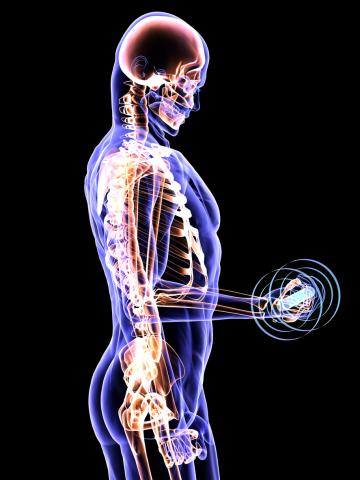An Exercise Lesson from Our Ancestors of Long Ago
When we look at fossils of early man, we might be in awe of their heavy, powerful bones. Yet research from University of Cambridge in the UK reveals the surprising truth that our own bones have the potential to be just as strong.
The research team found that human hunter-gatherers of 7,000 years ago had bones that were as strong as those of orangutans—yet today, people have significantly lighter and weaker bones. Is the change due to our genes? Our diet? No, the team says—the culprit is our much less active lifestyle, specifically, a great reduction in activities that strengthen the bones. When it comes to “use it or lose it,” most of us are losing it!
The study authors reported, “There is, in fact, no anatomical reason why a person born today could not achieve the bone strength of an orangutan or early human forager. But even the most physically active people alive are unlikely to be loading bones with enough frequent and intense stress to allow for the increased bone strength seen in the ‘peak point’ of traditional hunter-gatherers and nonhuman primate bones.”
Study co-author Dr. Colin Shaw says that for millions of years, the lives of our primitive ancestors involved much action and physical activity. Said Shaw, “It’s only in the last 50 to 100 years that we’ve been so sedentary. Sitting in a car or in front of a desk is not what we have evolved to do.”
Why do strengthening activities make our bones stronger? It’s complicated (read more here), but in short, says Shaw, “This thickening is the result of constant loading on the bone from physical activity as hunter-gatherers roamed the landscape. The fierce exertion caused the bone mesh to grow back ever stronger and thicker throughout life—building to a ‘peak point’ of bone strength which counterbalanced the deterioration of bones with age.”
Even though few of us spend our days roaming the wilderness in search of food, Shaw assures us that we can still benefit from regular workouts. He says, “The fact is, we can be as strong as an orangutan—we’re just not, because we are not challenging our bones with enough loading, predisposing us to have weaker bones so that, as we age, situations arise where bones are breaking when, previously, they would not have.” He adds, “Hip fractures, for example, don’t have to happen simply because you get older, if you build your bone strength up earlier in life so that as you age it never drops below that level where fractures can easily occur.”
Strength training should begin early in life, but is of benefit at any age. Why don’t more people take part in weight lifting and other strength-building activities? Researchers from Penn State College of Medicine speculate that while most people today are aware of the benefits of aerobic exercise, guidelines for strength training were only issued a decade ago.
It’s time to bring our knowledge up to date! Strength training not only builds bone and muscle, but is also linked with improvements in diabetes, low back pain and obesity—and longevity! Penn State professor Jennifer Kraschnewski and her team studied a large group of seniors and found that those who took part in strength training lived longer—with a 41 percent lower chance of dying from heart disease, and a 19 percent lower chance of death by cancer during the years of the study.
These findings are very encouraging, say researchers. Says Kraschnewski, “We need to identify more ways that we can help get people engaged in strength training so we can increase the number from today’s 10 percent to a much higher percentage of our older adults who are engaged in these activities.”
Strengthening activities include lifting weights, using a resistance band, and exercises that make you lift your own body weight, such as toe stands. There are weight training exercises you can do while seated in a chair. Check out senior exercise programs at the gym or local senior center. Visit the National Institute on Aging’s Senior Health website to learn more.
It’s never too late to start an exercise program—but talk to your doctor first. Your healthcare provider can recommend strengthening exercises that will be safe and effective for your individual health condition.
